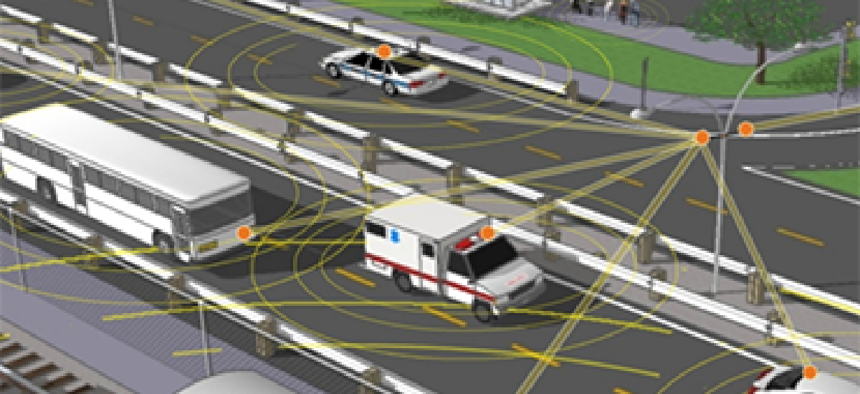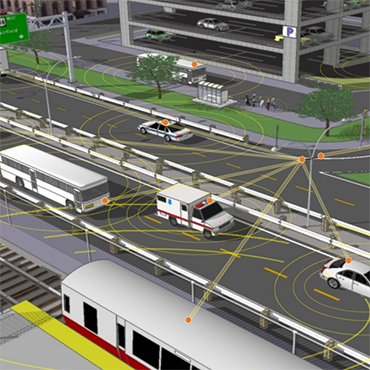NHTSA takes next step on national crash-avoidance system

In addition to radio interference, skeptics also voice concerns about the cybersecurity of increasingly networked vehicles.

The National Highway Traffic Safety Administration has moved further down the road toward a networked vehicle crash-avoidance system, but skeptics continue to voice concerns about the implications for physical safety and cybersecurity.
NHTSA issued an advance notice of proposed rulemaking on Aug. 18 to solicit public comments on the technical specifics of its plans for a system that would use onboard wireless devices to transmit and share critical safety information among vehicles on the road. In a report issued with the notice, the agency said the system could save more than 1,000 lives per year and prevent almost 600,000 crashes.
According to an NHTSA statement, the report and notice will help the agency gather significant input from the public and stakeholders to support the goal of delivering a final rule by 2016.
"Safety is our top priority, and [vehicle-to-vehicle] technology represents the next great advance in saving lives," Transportation Secretary Anthony Foxx said in the NHTSA statement. "This technology could move us from helping people survive crashes to helping them avoid crashes altogether -- saving lives, saving money and even saving fuel thanks to the widespread benefits it offers."
The notice comes as the Federal Communications Commission considers opening more spectrum in the 5 GHz band to accommodate unlicensed wireless devices, including those involved in vehicle-to-vehicle communications. According to NHTSA, the national V2V system would transmit and receive messages in the 5.8-5.9 GHz range, and automakers and other groups have urged the FCC to be cautious about opening more of that band for use by unlicensed devices.
NHTSA's rulemaking notice asks for comments on the potential impact of the FCC's proposal, saying the FCC "has proposed the possibility of sharing the [dedicated short-range communications] frequency of 5.9 GHz with other unlicensed devices. What are the possible ramifications of this sharing on current safety applications and future applications that may be developed?"
The Alliance of Automobile Manufacturers released a statement saying, "As we begin to move from the research lab to the actual deployment of vehicle-to-vehicle (V2V) and vehicle-to-infrastructure (V2I) communications technology, it remains critically important that the FCC preserve the ability to use the radio spectrum reserved for it. We understand the pressing need for additional spectrum and are open to sharing this spectrum if it can be done safely. We continue to urge the FCC not to compromise the use of the spectrum until it is definitively established that sharing will not interfere with the safety of the driving public."
Radio interference is not the only issue with increasingly autonomous vehicles. As cars and trucks contain more onboard networked devices and gadgets, automakers' concerns about cybersecurity are growing. In July, the Alliance of Automobile Manufacturers created a voluntary information sharing and analysis center aimed at protecting the cybersecurity of increasingly Internet-wired vehicles. The organization said the center would collect and share information about existing or potential cybersecurity threats and vulnerabilities in motor vehicle electronics or associated in-vehicle networks.
"Despite the absence of reported cybersecurity incidents affecting vehicles on the road, we are taking action to prepare for possible future threats," according to a statement on the organization's website.
Additionally, a recently disclosed unclassified/for-official-use only memo issued by the FBI in May and posted by the Public Intelligence open-source website on Aug. 18 warns that onboard systems that run autonomous, driverless vehicles can contribute to safer driving but also offer advantages for criminals.
"While autonomous cars would likely face many hardships with evasive driving or car chases, these cars can optimize the best way to perform, say, a 'K turn' or other awkward maneuvers that could cause [emergency] responders to lose time in pursuit of a suspect or getting to a scene in a timely fashion."
However, those precision driving capabilities would also be available to criminals who are evading the police in a driverless or driver-assisted vehicle.
"Law enforcement officers and bad actors will both be able to conduct tasks that require use of both hands or take one's eyes off the road which would be impossible to conduct simultaneously today while driving a car manually," the FBI memo states.
NHTSA said key-encrypted communications technology will form the cybersecurity foundation of the V2V system. Transportation Department researchers compared three cybersecurity options -- symmetric encryption, group signature and asymmetric public-key infrastructure systems -- and chose a PKI option as the most effective approach to implementing communications security and trusted messaging for a large set of users.


